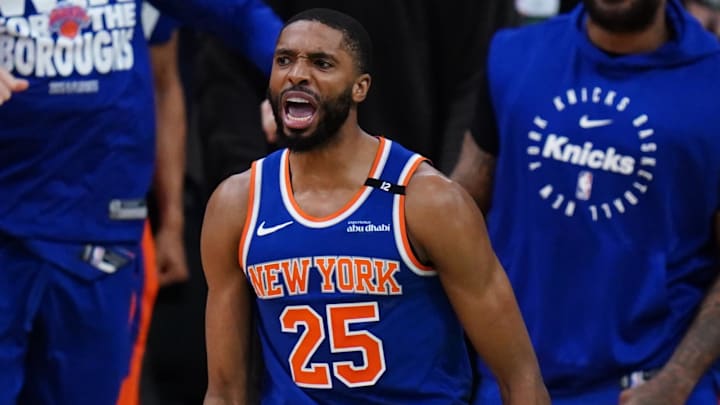After burning through a bunch of assets and financial flexibility to assemble the current core, the New York Knicks face a ton of urgency to win now. That pressure is not going anywhere. But this team is more viable over the longer term than many people realize
Salary-cap guru Eric Pincus recently dropped his rankings of the league’s worst financial situations. The Knicks crack the list, but they finish eighth. That’s not terrible considering so many contenders are placed in front of them, including the Minnesota, (No. 7), Cleveland, (No. 6), Denver (No. 5), and Orlando (No. 2). Wild cards like Boston (No. 4) and Philadelphia (No. 1) are ahead of them, too.
Pincus’ reasoning for including the Knicks is driven by the usual talking points. They are “heavily invested” in the core after extending Mikal Bridges, and don’t have draft equity to trade. This speaks to the fine lines New York is towing. Even filling out the rest of the roster is a challenge.
Still, the Knicks are not out of options. And the narrow margins in which they’re working now will pay dividends later.
New York has more immediate flexibility to make changes than you think
Operating underneath the second apron for another season lets the Knicks aggregate salaries in any trade. They cannot take back more money than they send out, but the ability to flip multiple players in the same deal has real value.
New York isn’t barren of trade chips, either. It may not have any outright first-rounders, but its distant swaps could have appeal if suitors don’t believe the team will be good to end the decade, or heading into the 2030s.
Many of the Knicks’ players also have standalone value. Jalen Brunson and OG Anunoby are presumably untouchable. Karl-Anthony Towns is mega expensive, but still someone who would draw interest. Bridges’ extension may actually give him more value. And he signed his deal just in time to be trade-eligible before the February 5 deadline.
Deuce McBride is on one of the NBA’s best contracts. Mitchell Robinson’s $13 million expiring salary opens various doors. Josh Hart’s $19.5 million salary is perfectly priced for mid-to-high-end trades, and he has just one guaranteed year left on after this one.
This Knicks roster is manageable long term
Of course, New York’s payroll beyond this season incites more concern. Bringing back everyone, including a new contract for Robinson, puts them into the second apron.
Entering the second apron isn’t the end of the world. The trick is exiting it quickly, so your draft pick seven years into the future isn’t frozen, or potentially moved to the end of the first round.
Ducking the second apron next year is in play if the Knicks let Robinson walk. Beyond that, Hart’s team option and Towns’ player option in 2027 offer other chances. KAT, specifically, could help the cause by opting out, and signing a deal worth more total money, with a lower annual salary. New York may only have to spend one season in the second apron, without obliterating its core—especially with Brunson still on a below-market contract.
Draft picks will start to become available for trades as well. Next summer, the Knicks will have two to dangle: whoever they select in June, and their 2033 selection.
Managing the roster and finances over the long haul won’t be easy. It only gets harder if New York doesn’t hit on any of its current young, cost-controlled players. Relative to many other contenders, though, the big-picture logistics could be so much worse.
